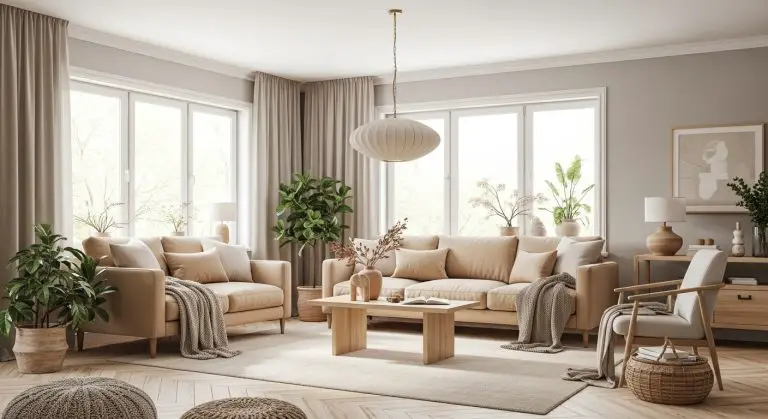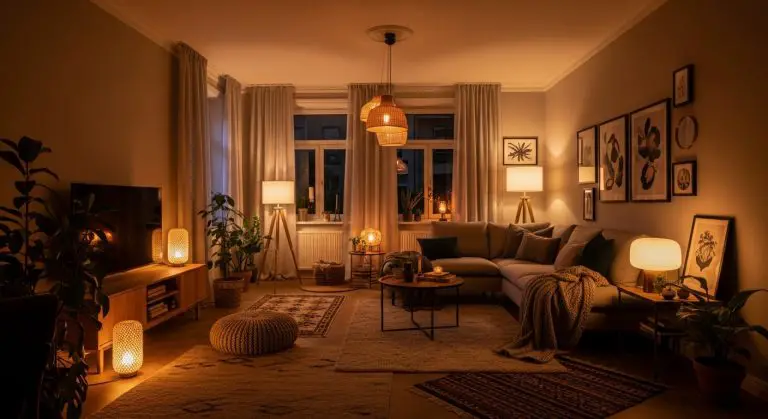Contemporary Living Room: 16 Achievable Design & Layout Ideas That Actually Work
If you’ve ever stared at your living room and thought, “Hmm… this could look so much better if I knew what I was doing”, you’re not alone. I’ve been there—rearranging furniture at 11 PM, wondering if my coffee table is plotting against me.
The truth is, a contemporary living room doesn’t have to feel cold, over-designed, or impossible to achieve. You can totally pull it off—whether you’re in a spacious open-plan home or a cozy apartment—if you focus on the design and layout, not just the pretty throw pillows.
Today, I’m breaking down that will make your space feel modern, functional, and stylish—without making you sell your sofa to fund the makeover.
1. Central Conversation Pit
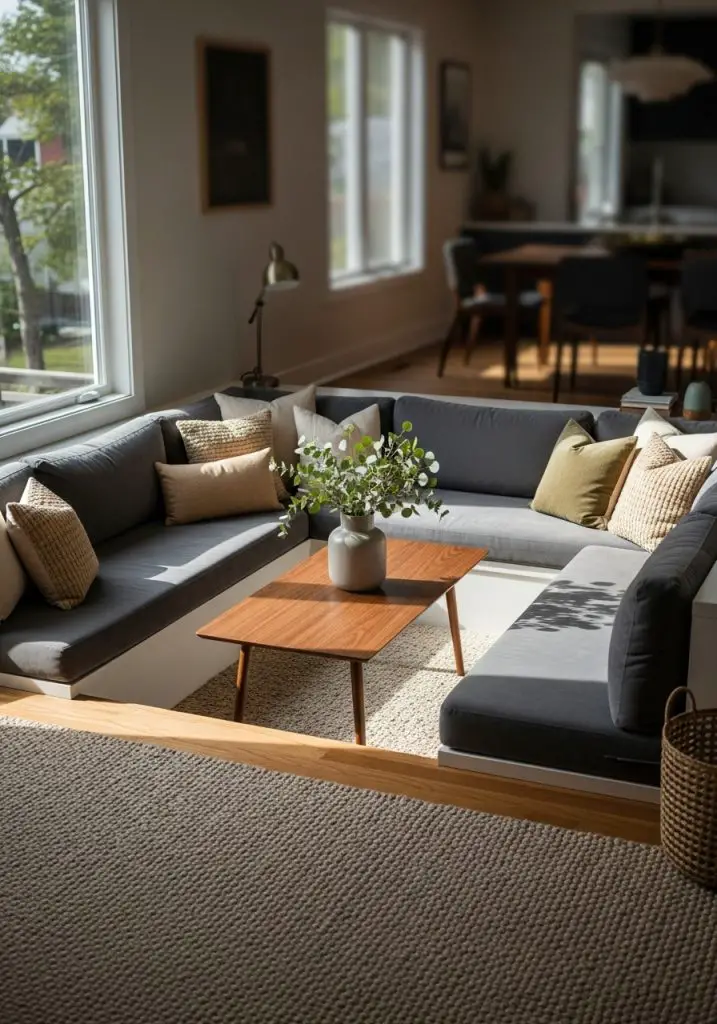
Picture this: you step down into a cozy, sunken space lined with built-in seating, cushions, and maybe a statement coffee table. That’s the central conversation pit—a retro-inspired feature making a comeback in contemporary living room design.
Why it works:
- It instantly becomes the heart of the home.
- It’s a natural conversation starter (literally).
If you’re not ready to rip up your floor, fake the effect by arranging a U-shaped sectional on a large rug with oversized cushions. You’ll get the pit vibe without the construction dust.
2. Dual-Axis Seating Layout
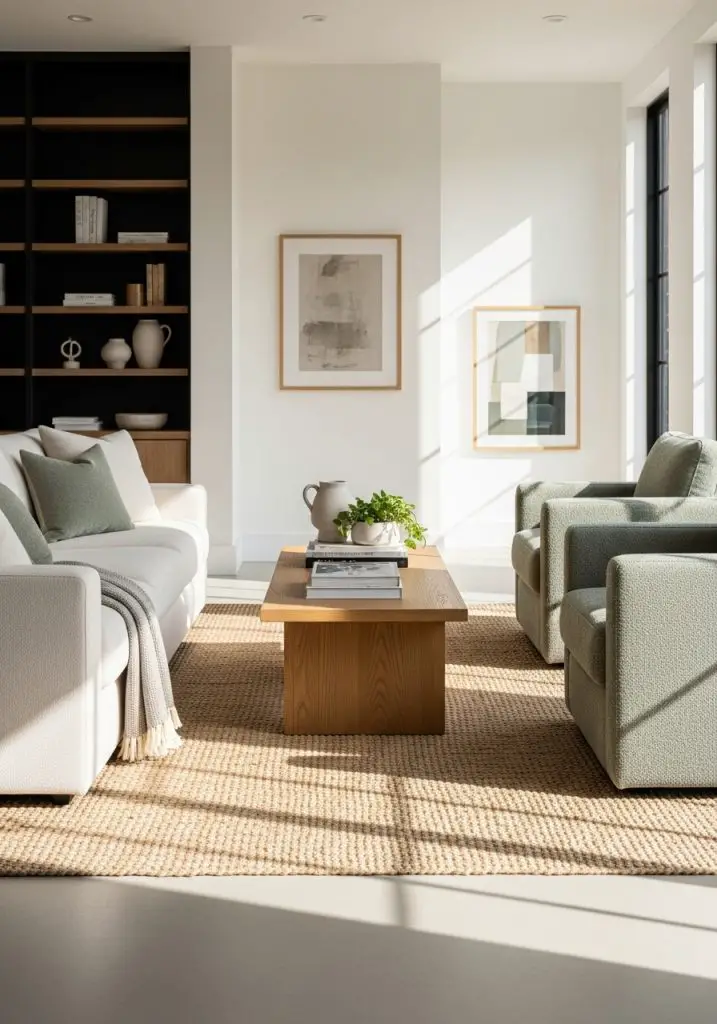
Ever been in a long, narrow living room that feels like a runway? A dual-axis seating layout fixes that. Instead of putting all the furniture in one line, arrange sofas and chairs to create two conversation “crossroads.”
This setup:
- Prevents that awkward tunnel effect.
- Keeps everyone included in the conversation, no matter where they sit.
It’s especially great for open-plan homes where you want the living room to feel welcoming from multiple directions.
3. Floating Sofa with Console Table
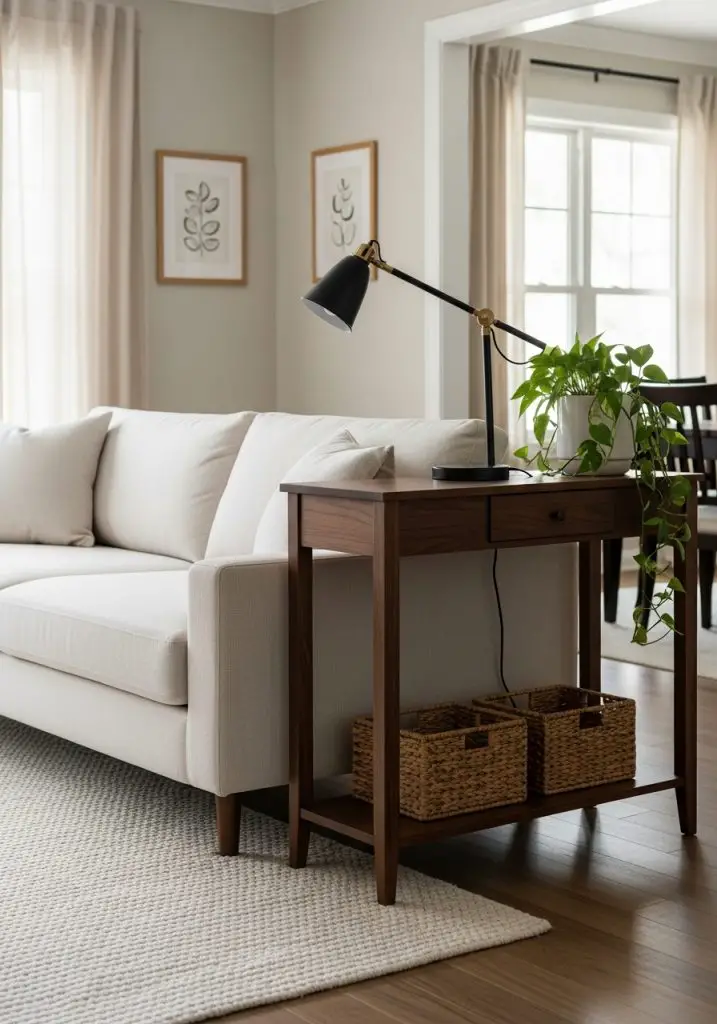
Step one: pull your sofa away from the wall. Step two: slide in a slim console table behind it. Step three: style it with a lamp, plants, or even a couple of baskets.
Why it’s genius for a contemporary living room:
- It creates a subtle division between spaces without blocking the view.
- Adds extra surface space without adding bulk.
Pro tip: keep the console table’s depth between 10–15 inches so you don’t cramp the walkway.
4. Split-Level Visual Zones

If you’ve got an open-concept layout, you can separate your living area from the dining or kitchen zone using split levels—raising or lowering one section of the floor.
Benefits:
- Clearly defines spaces without walls.
- Adds a sense of architectural interest.
Not up for a full remodel? Use rugs, low platforms, or even a change in flooring material to mimic the effect.
5. Frameless Glass Wall Feature
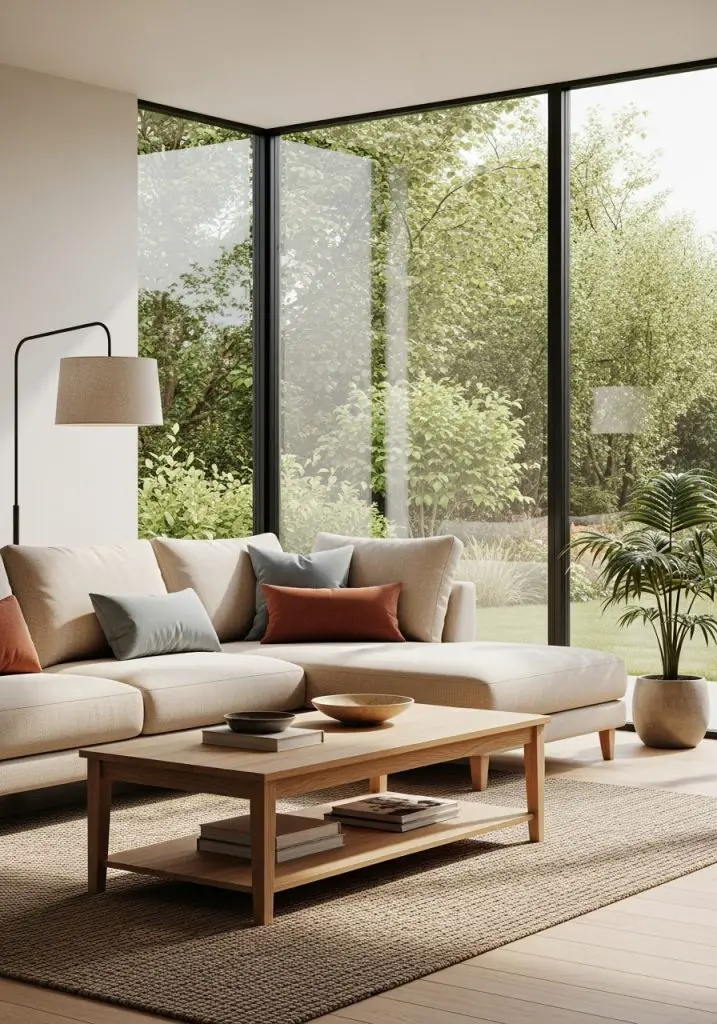
Want a living room that feels bigger without knocking down half your house? Replace one wall with a floor-to-ceiling glass panel or sliding glass doors.
In a contemporary living room, this brings:
- Tons of natural light.
- A seamless connection to the outdoors.
If the budget’s tight, even one oversized window upgrade can give you a similar open, airy vibe.
6. Off-Center Focal Point Layout
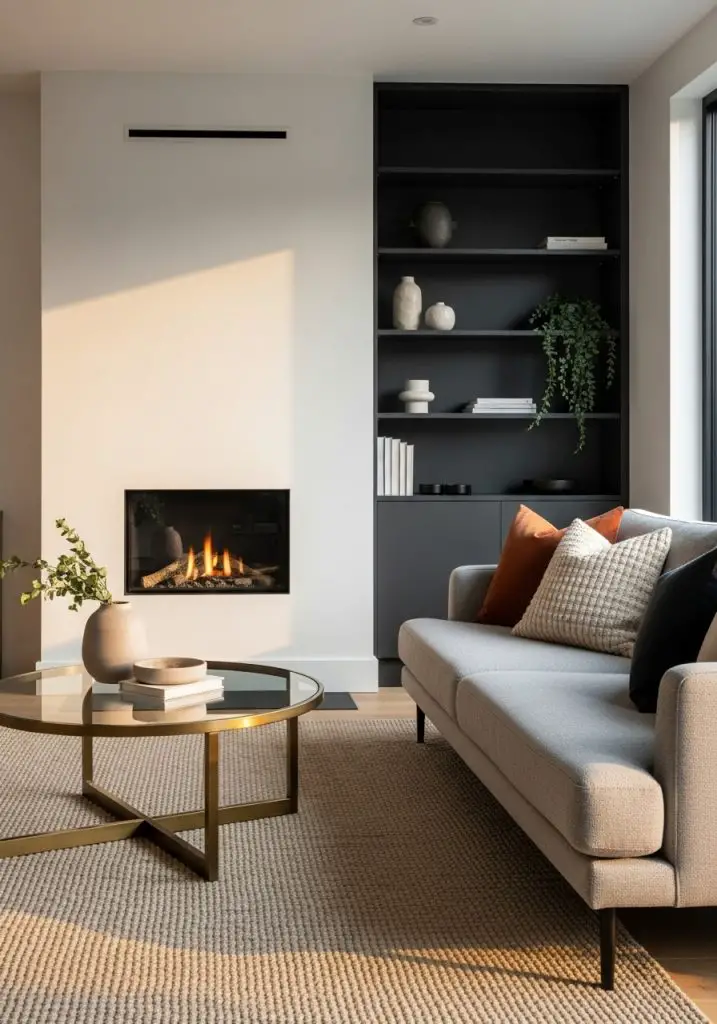
Most rooms put the TV or fireplace dead center. Yawn. An off-center focal point feels fresh, unexpected, and modern.
The trick:
- Position your main feature (TV, art, fireplace) slightly off-center.
- Balance the visual weight with shelving, plants, or art on the opposite side.
It gives the room personality while keeping things functional.
7. Circular Seating Cluster
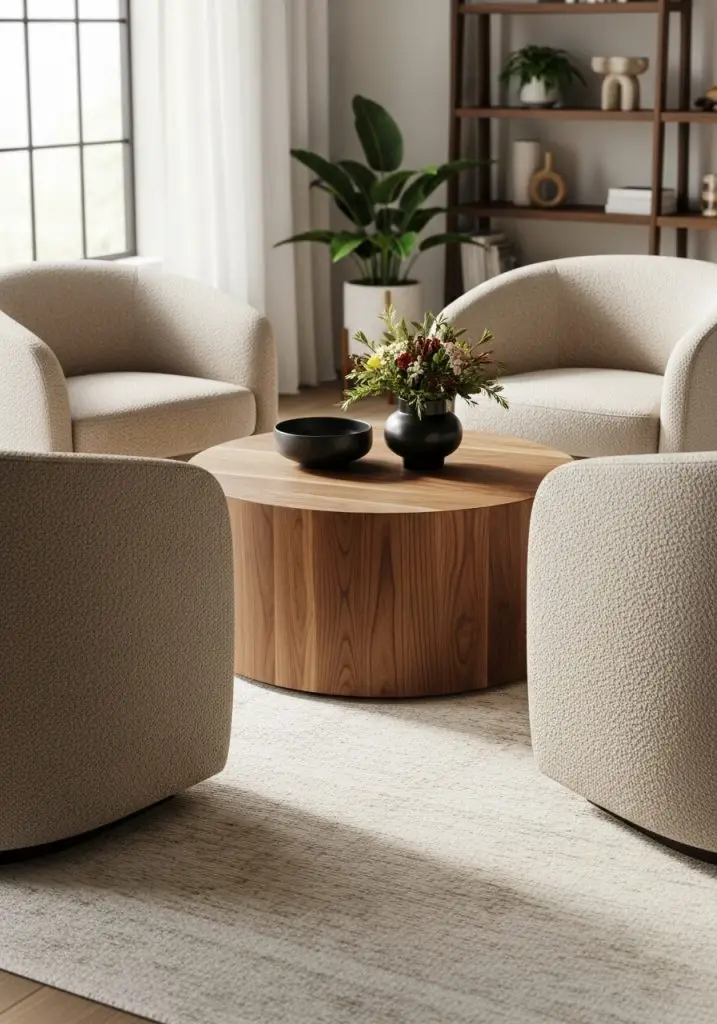
Contemporary design loves clean lines, but you can soften them with a circular seating arrangement. Use curved sofas or arrange four chairs around a round coffee table.
Why it works:
- Creates an intimate conversation zone.
- Breaks up a rectangular room’s hard edges.
If curved furniture isn’t in the budget, angle straight sofas slightly to mimic the effect.
8. Layered Lighting Zones
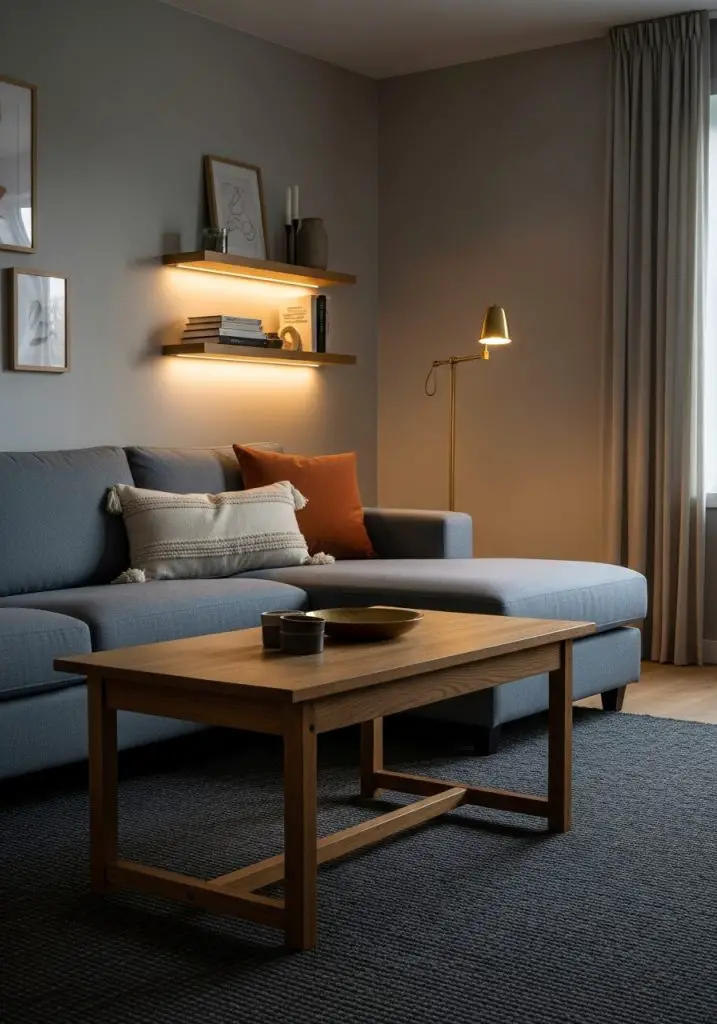
Lighting is a game-changer. In a contemporary living room, you need three layers:
- Ambient – ceiling lights for overall brightness.
- Task – reading lamps or desk lamps for focused light.
- Accent – spotlights or LEDs to highlight art or architecture.
Put them all on dimmers so you can switch from “party-ready” to “Netflix-and-snacks” in seconds.
9. Integrated Bench Seating
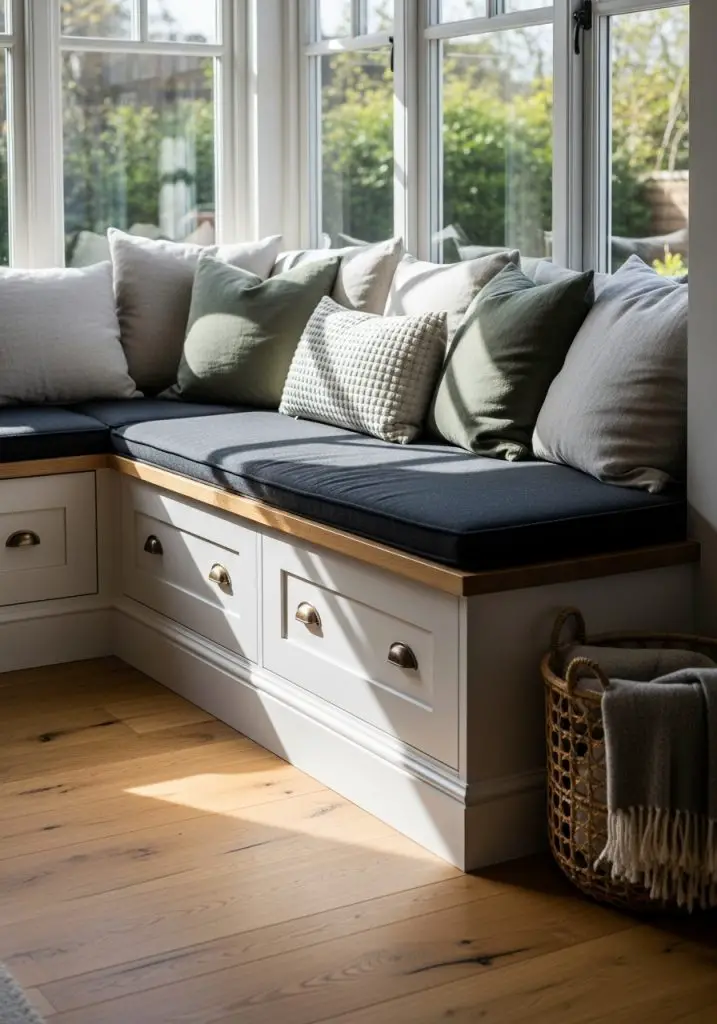
Need more seating without cramming in extra chairs? Install built-in bench seating along a wall or under a window. Bonus points if it has storage underneath.
Why it’s a win:
- Makes use of awkward corners.
- Keeps the floor space open.
Renters can cheat this with freestanding storage benches topped with cushions.
10. Hidden TV Behind Sliding Panels
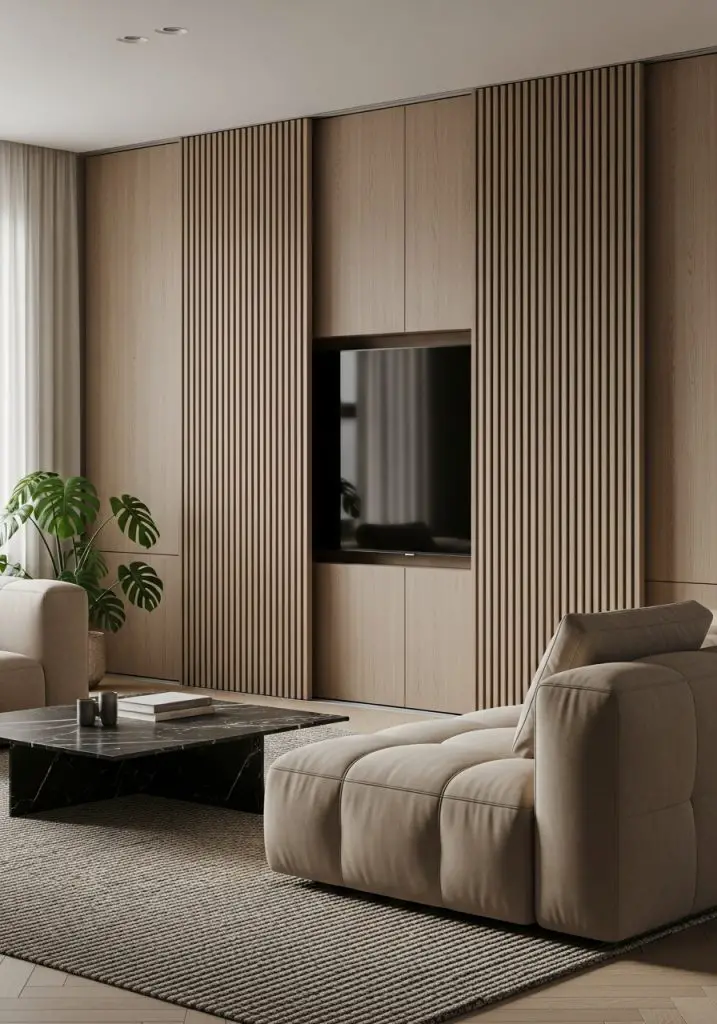
A contemporary living room loves clean lines, but TVs aren’t exactly stylish décor. Hide yours behind sliding panels or folding doors so it disappears when not in use.
Budget-friendly hack: hang a large piece of art on hinges in front of the TV. Instant elegance.
11. Diagonal Layout Flow
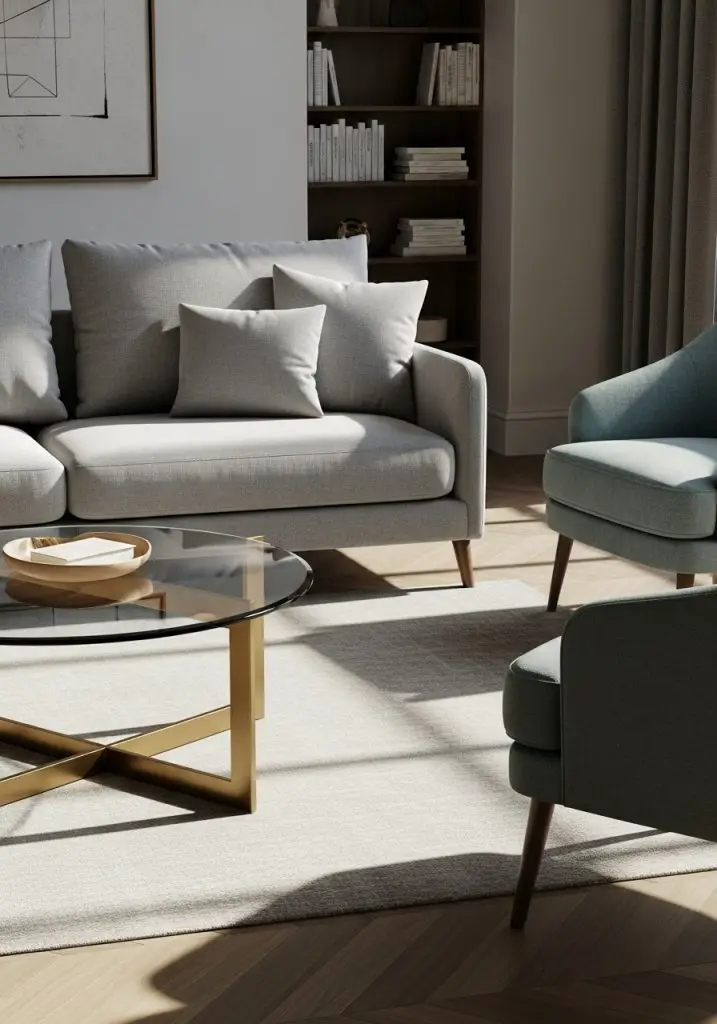
If your living room feels too boxy, try placing your furniture at a 45° angle. Suddenly, the space feels larger and more dynamic.
This layout:
- Opens up walking paths.
- Creates unexpected visual interest.
Best part? It costs nothing but a little muscle to move the furniture.
12. Partition Wall with Cutouts
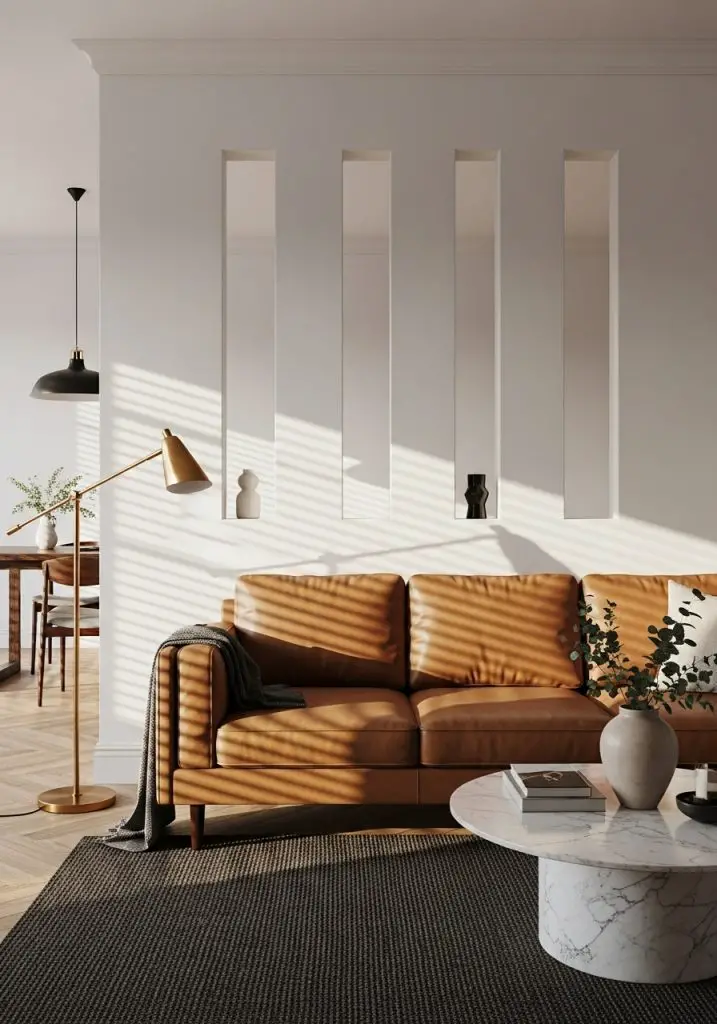
Want separation without killing the open feel? A partial wall with open cutouts is the answer.
Why it works:
- Lets light flow through.
- Frames views between spaces.
It’s modern architecture’s way of saying, “I want privacy, but not too much.”
13. Floor-to-Ceiling Open Shelving Wall
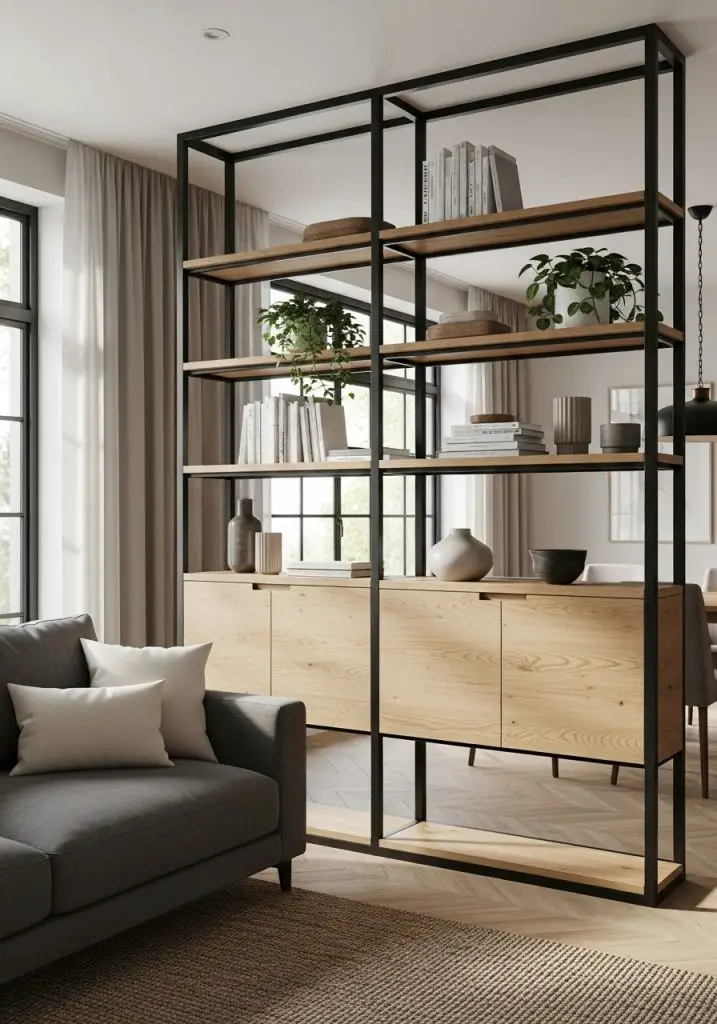
Instead of a solid divider, use a floor-to-ceiling shelving unit to separate zones. Keep the styling minimal: think books, plants, and a few well-placed objects.
It doubles as storage and a design statement—perfect for a contemporary living room.
14. Built-In Window Seat Lounge
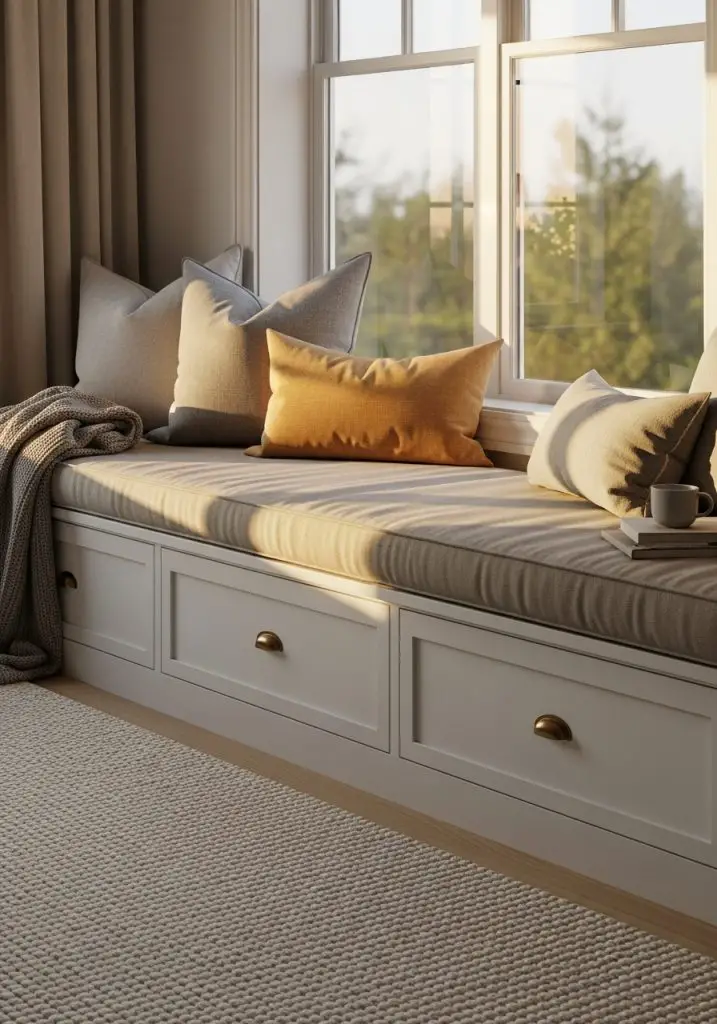
Turn that bare window into a cozy nook with a built-in window seat. Add a cushion, some pillows, and maybe a blanket for lazy Sunday reading.
If your windows can’t handle a built-in, push a slim bench in front and style it the same way.
15. Dual-Rug Zone Definition
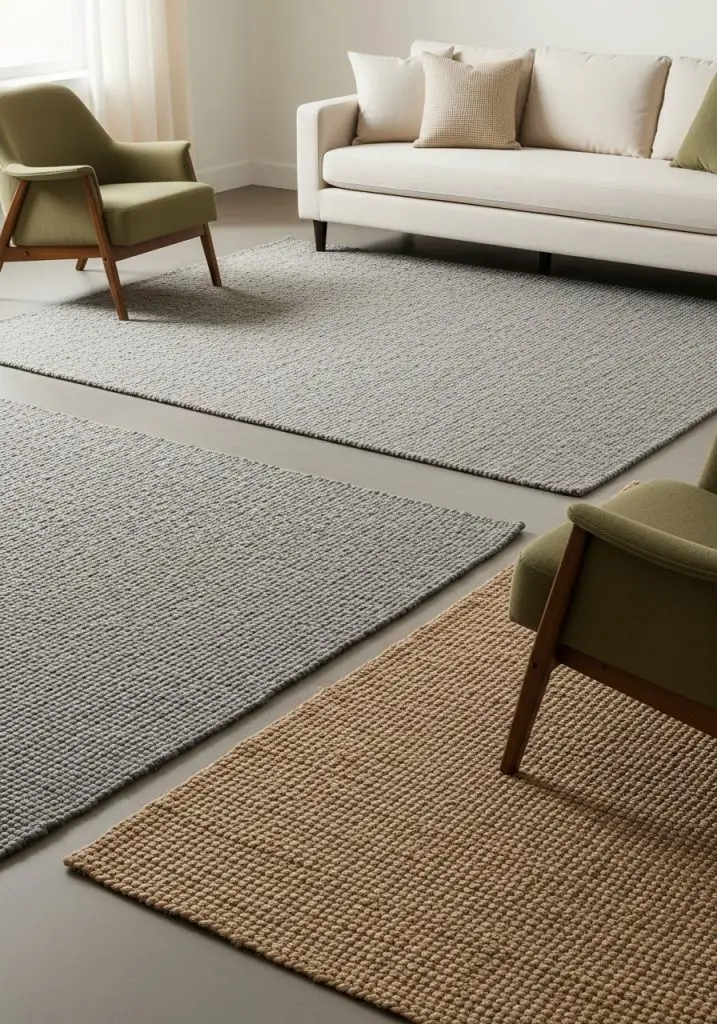
In larger living rooms, one rug often isn’t enough. Use two rugs to define different zones—like a seating area and a reading corner—while keeping the overall style cohesive.
Make sure the rugs share a color palette so they complement rather than compete.
16. Hidden Perimeter Storage
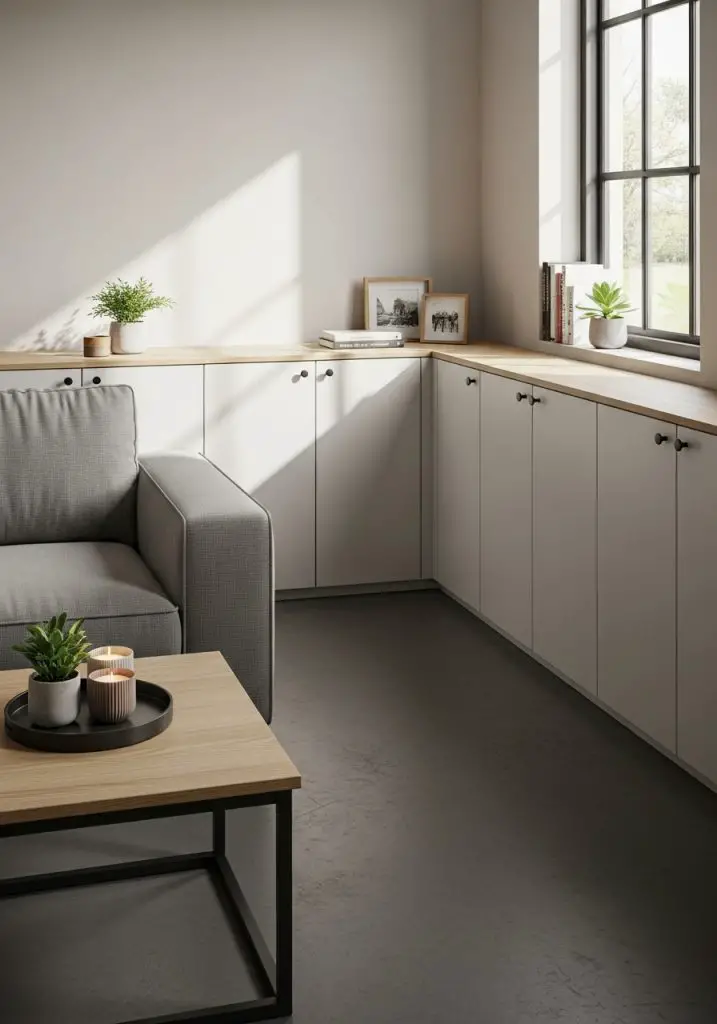
Clutter and contemporary design don’t mix. Add low-profile storage units along the room’s perimeter to stash blankets, games, or tech.
This keeps the space sleek and functional without sacrificing your minimalist vibe.
Final Word
Designing a contemporary living room isn’t about buying all-new furniture—it’s about thinking smarter about how your space works. From the drama of a conversation pit to the subtle genius of layered lighting, the right layout can make even the most awkward room feel intentional.
Start small. Rearrange what you already have, add one or two of these ideas, and watch your living room transform. And hey, if you do go for the glass wall or split-level upgrade, just know I’m already picturing myself enjoying coffee there. 🙂

Michael Chen is Certified Kitchen Designer with 12 years of experience, he is known for blending style with smart functionality. he is the proud winner of the 2023 National Kitchen & Bath Design Award, and through HouzGem, he shares expert tips and inspiration to help readers create beautiful, efficient kitchens and home spaces.



